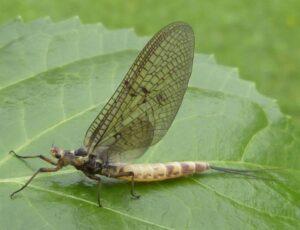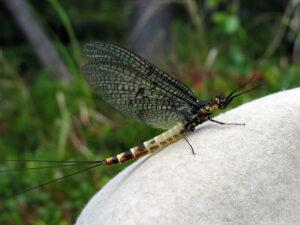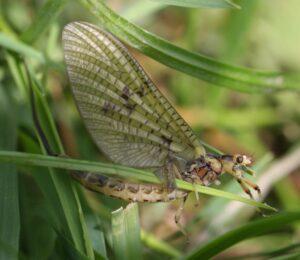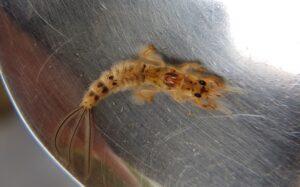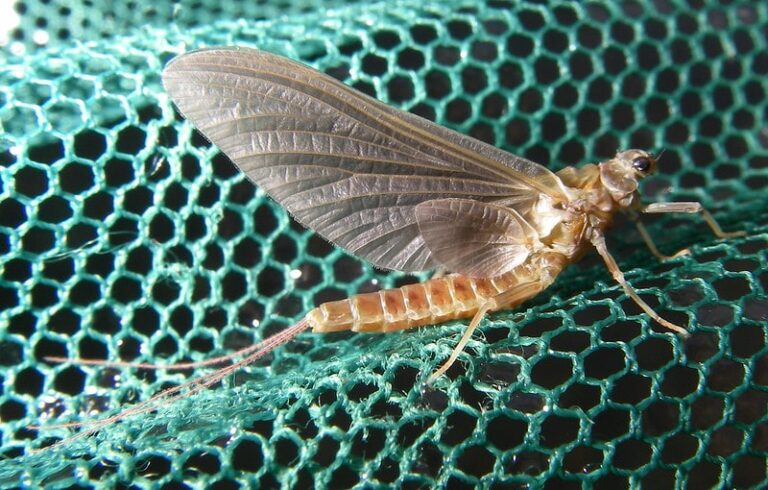Green Drake Mayfly (Ephemera danica)
Updated on
17/11/2022The green drake mayfly or green drake is a mayfly species belonging to the Ephemera genus. Of the fifty species of mayfly common in Britain, the green drake mayfly is the commonest. The eastern green drake mayfly (Ephemera guttulata) is one of the close cousins of this species, also belonging to the same genus as the latter.
Scientific Classification
- Class:Insecta
- Order:Ephemeroptera
- Family:Ephemeridae
- Genus:Ephemera
- Species:E. danica
Conservation Status
Description
In the imago stage, the male drake mayflies are smaller than their female counterparts, attaining a size of 0.6 to 0.8 inches (15 to 20 mm). The slightly larger females measure around 0.6 to 1.0 inches (16 to 25 mm). The wings of the adults appear translucent and spotted, with dark vein-like patterns running across them. While the male has a darker coloration on their body, the females are mostly lighter, with a gray body. The male drake mayflies even have long tails and forelegs that they use to hold their female counterparts during mating.
Distribution: Europe and the British Isles
Habitat: Lakes, streams, fast-flowing rivers, gravel or sandy bottom
Do They Bite/Sting: No
Lifespan: Four days
Predators: Swallows, amphibians, spiders, trout
Behavior and Characteristics
Feeding
They eat in their larval stage, with their diet comprising organic debris. The adults lack functional mouthparts; hence they don’t feed at all.
Mating
The mating sites of adults are close to water sources, making it easy for the female to dip her abdomen into the water’s surface and fertilize her eggs. Post fertilization, the females fall off the water surface and die.
Life Cycle
The life cycle of a green drake mayfly takes 1-2 years to complete. However, the nymph stage may sometimes last up to 3 years on average.
1. Egg Stage
The oval-shaped eggs go through fifty molts before reaching the adult stage.
2. Nymph Stage
The nymphs are 1.2 inches (30 mm) long. In the nymphal stage, they dig a tunnel in the gravel of river beds and live there, also hunting for food.
3. Dun Stage
The dun stage is the phase between the nymph and adult when the immature mayfly goes through a transition. The duns have a dull, yellowish body covered with brown veins. Their tails and forelegs are shorter than the spinner mayflies.
4. Spinner Stage
This is the fourth and last stage of the green drake mayfly’s lifecycle when they mature into adults. The spinners initially have a dull green body and eventually mature to acquire a deep coloration and heavily veined appearance.
The adults mostly emerge from May to June but can even be seen from April through November.
Interesting Facts
- This, along with other species of the genus has an extremely short lifespan, huts three to four days, leading to their genus name Ephemera.
- The female green drake mayfly around 8000 eggs in her short lifespan.
Source
naturespot.org.uk, pbs.twimg.com, globalflyfisher.com, eol.org




